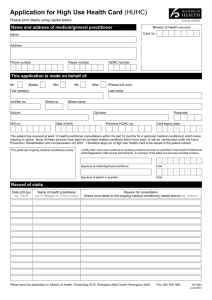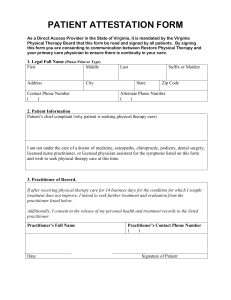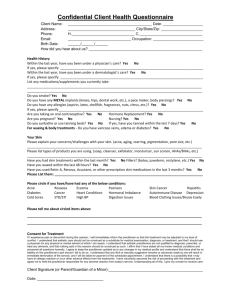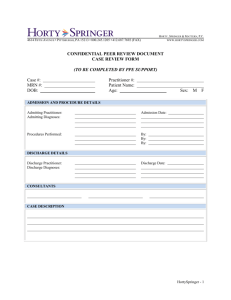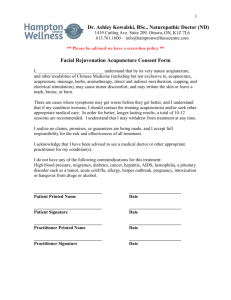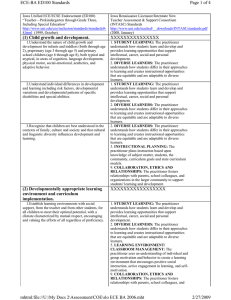Public Speaking & PR techniques
advertisement
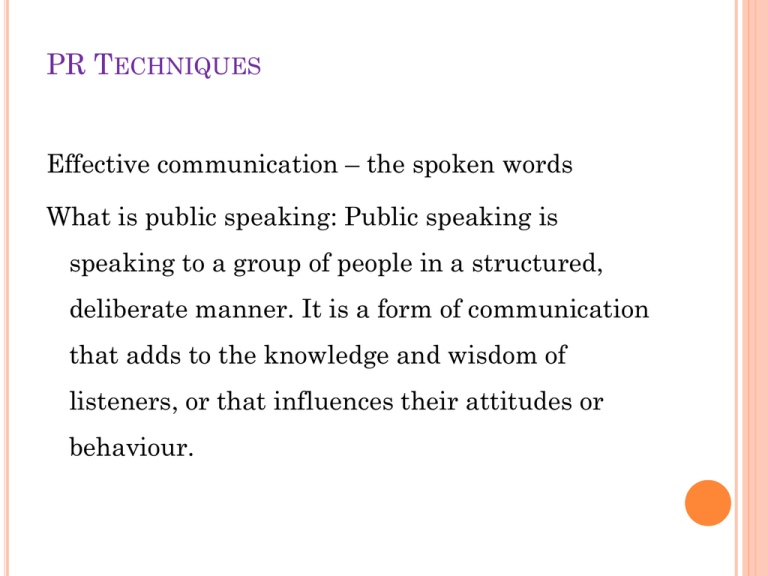
PR TECHNIQUES Effective communication – the spoken words What is public speaking: Public speaking is speaking to a group of people in a structured, deliberate manner. It is a form of communication that adds to the knowledge and wisdom of listeners, or that influences their attitudes or behaviour. Key communication factors – there are ten key factors that affect our communication: o Our personality, the ―this is me ―aspect of communication. o How we look to others in our body, our expression, our posture and how we sit, stand and walk o The kind of eye contact we do or do not establish with others o The hand and facial gestures we use o Our general appearance – dress grooming hair style, physical attitude o our use of language o our voice quality o the clarity with which we get our intended message across o the level of confidence we generate when we speak o the degree to which we participate and involve ourselves in public speaking situations 20 Points to Consider 1. Know the needs of your audience and match your contents to their needs. 2. Know your material thoroughly. 3. Put what you have to say in a logical sequence. 4. Ensure your speech will be captivating to your audience as well as worth their time and attention. 5. Practice and rehearse your speech at home or where you can be at ease and comfortable, in front of a mirror, your family, friends or colleagues. 6. Use a tape-recorder and listen to yourself. 7. Videotape your presentation and analyse it. 8. Know what your strong and weak points are. 9. Emphasize your strong points during your presentation. 10. When you are presenting in front of an audience, you are performing as an actor on stage. 11. The way you are being perceived is very important. 12. Dress appropriately for the occasion. 13. Be solemn if your topic is serious. 14. Present the desired image to your audience. 15. Look pleasant, enthusiastic, confident, proud, but not arrogant. 16. Remain calm. Appear relaxed, even if you feel nervous. 17. Speak slowly, enunciate clearly, and show appropriate emotion and feeling relating to your topic. 18. Establish rapport with your audience. 19. Speak to the person furthest away from you to ensure your voice is loud enough to project to the back of the room. 20. Vary the tone of your voice and dramatize it if necessary. If a microphone is available, adjust and adapt your voice accordingly. Review of 11 Hidden Causes of Public Speaking Stress 1. Thinking that public speaking is inherently stressful (it's not). 2. Thinking you need to be brilliant or perfect to succeed (you don't). 3. Trying to impart too much information or cover too many points in a short presentation. 4. Having the wrong purpose in mind (to get rather than to give/contribute). 5. Trying to please everyone (this is unrealistic). 6. Trying to emulate other speakers (very difficult) rather than simply being yourself (very easy). 7. Failing to be personally revealing and humble. 8. Being fearful of potential negative outcomes (they almost never occur and even when they do, you can use them to your advantage). 9. Trying to control the wrong things (e.g., the behaviour of your audience). 10. Spending too much time in preparing (instead of developing confidence and trust in your natural ability to succeed). 11. Thinking like your audience will be as critical of your performance as you might be. In public speaking, as in any form of communication, there are five basic elements, often expressed as "who is saying what to whom using what medium with what effects?" The purpose of public speaking can range from simply transmitting information, to motivating people to act, to simply telling a story. Interpersonal communication and public speaking have several components that embrace such things as motivational speaking, leadership/personal development, business, customer service, large group communication, and mass communication. Public speaking can be a powerful tool to use for purposes such as motivation, influence, persuasion, informing, translation, or simply entertaining. Characteristics of Public Speaking o Formal structure o Prior planning o Very little direct contact o Audience participation is limited o Target audience o Speech with specific objectives o Feedback delayed Purpose of Public Speaking o To instruct o To exchange information o To persuade o To entertain o To blame or praise o To defend or accuse Analysing Audience o The characteristic of the group (demographics); o The psychological make-up of the listeners (psychographics); and o The place where the presentation will be made (setting). Misconceptions of public speaking o The ability to make speeches is natural and cannot be learned. o Good intentions are enough when it comes to making a speech. o It‘s not what you say that is important but how you say it. Some guidelines for public speaking Do’s Know your subject. Follow a trigger point system. Rehearse well. Make one point at a time. KISS Principle: Keep it simple silly! Know your audience. Know the place/venue Rest before you speak. Start with the right cue card (Arrange cards before commencement) Don’ts Don‘t forget to thank your hosts. Don‘t test the microphone by blowing or tapping onto it. Don‘t tell jokes unless you are good at it. Don‘t use overworked clichés. Don‘t use offensive languages. Don‘t make personal attacks on any person in the audience. Don‘t exceed your allocated time. Feedback o Paying careful attention to the feedback we receive from others; o Asking our friends and colleagues to highlight to us any distracting mannerisms we possess. Studying the way in which others communicate nonverbally and ensure that we do not repeat the mistakes ourselves; and studying ourselves on audio or video recordings and critically identify some of the non-verbal habits of which we are not aware of. PRESENTING A SPEECH So once the preparation of a speech is done, the speaker must concentrate on presenting the speech. Please read pages 163 of your prescribed book for further details. Clarity Present your speech in such a way that your meaning is absolutely clear to your audience. Avoid vague, confusing, or ambiguous statements and when necessary illustrate your meaning. Define terms by using ―by X I mean…‖ Ensure the use of simple words that you can pronounce. Emphasis Speakers are not only heard, they are also seen, and their aim should be to enhance their speeches by their appearances, gestures, and animation. Getting attention Focus the audiences‘ attention, so that they remember your points by using memory retention techniques such as: Repeating a point with deliberate emphasis Using visual aids Dramatization Using examples Choosing appealing words or phrases which will be remembered. Maintaining interest The following elements will help you keep your audience‘s attention: Vividness Humour Drama Personal appeal Adjusting delivery according to audience response. SPEECH CONSTRUCTION A successful speech is arranged into three main sections: the introduction, the body of the speech with three or four main points, and the conclusion or ending. Introduction It is important to get the attention of your audience from the very beginning of your presentation. You only have one chance at making a first impression. Consider these pointers: o Open with a striking quotation o Relate an interesting human story o Ask a question o Start with shocking facts o Arouse curiosity o Use appropriate humour The introduction sets the stage and establishes the mood of your speech. Body Word of advice, work on the body of your speech first then consider the introduction. The body or the middle part of a speech usually contains factual information and should consist of three or four main points. The angle in which this is presented will secure the interest of your audience. Conclusion The final 5% of your speech summarizes the main message. Your conclusion may be signalled by: o o o o Using appropriate quotation Linking up with your opening Raising a laugh Paying the audience a sincere compliment However, a well-structured speech may be remembered if it is presented with enthusiasm and conviction of the speaker will impress the audience. PUBLIC RELATIONS MODEL The following four models described below are used when Public Relations programmes are conducted. (refer to guide: pg 24) o The press agency model o The public information model o The two-way asymmetrical model o The two-way symmetrical model The rhetorical/persuasive approach to Public Relations This approach focuses on the way in which not only communication but also persuasion is used in Public Relations. The persuasive approach is used to achieve compliance, goodwill, understanding, appreciation and action and also to create images to manage reputations PRACTICAL APPROACHES TO PUBLIC RELATIONS The four- step plan (RACE) :Research, Action, Planning, Communication and Evaluation. Research This step involves researching, conducting and evaluating programmes of action and communication on a continual basis in order to achieve an informed understanding of the organisations publics, which is necessary to its success. Technical knowledge and skills are required for opinion research, public issues analysis, direct mail, institutional advertising, publications and presentations etcetera. The question asked here is: What is the problem facing the PR practitioner? Action planning This step involves investigating the management of resources to set objectives, plan, budget recruit and train staff. To develop facilities needed to solve the problem recognized in the research step. The professional practice of Public Relations requires knowledge of communication arts, psychology, sociology, political science, economics and the principles of management and ethics. The question asked here is: What is the Public Relations practitioner going to do about the problem? Communication In helping to define and implement a policy, the Public Relations practitioner uses a variety of professional communication skills and plays an integrative role both within the organisation and between the organisation and the external environment. The question asked here is: How will the Public Relations practitioner communicate the message to the audience/s. Evaluation The evaluation process looks at whether or not the audience was reached and what the effect of the message was. The question asked here is: Did the Public Relations practitioner reach the audience? What was the effect? The RACE approach gives you a very basic idea of what Public Relations entails in practice. The primary focus of this approach is the knowledge and technical skills of the Public Relations practitioner involved in the Public Relations campaign or programme. The cyclic process The Public Relations process may also be conceptualized as a cyclic process where six components are linked in a chain. Research & Analysis This step consists of inputs that determine the nature and extent of the Public Relations problem. Public Relations personnel thus obtain insights into the problem from numerous sources, which may include feedback from the public, media reporting and editorial comment, analysis of trend data and personal experience. Policy formation Public Relations personnel assess these inputs, establish objectives and an agenda of activity and convey their recommendations to management. This is the advisory role of Public Relations. Programming In this step, management has to make policy and action decisions on the objectives, agenda and recommendations made by the Public Relations practitioners. Communication Public Relations personnel implement the programme or campaign through such means as news releases, publications, speeches and community relations programmes. Feedback The effectiveness of the efforts and actions are measured by means of feedback from the same components as in the research and analysis stage, namely: the public, media reporting and editorial comment and analysis of trend data. Programme assessment and adjustment The cycle is repeated after the programme assessment to solve and adjust related aspects of the problem that may require additional decision making and action. The RAISE formula The RAISE formula stands for Research, Adaptation, Implementation of Strategy and Evaluation. This approach for practising PR is accepted by the Public Relations Institute of Southern Africa ( PRISA) (pg 29 study guide). The interactive approach Another approach that focuses on the predispositions and needs of the target public is the interactive approach to Public Relations. The interactive approach to Public Relations involves four phases: assessment, creation, implementation and evaluation PR TECHNIQUES Media relations Publications Corporate image Corporate advertising Sponsorship Promotional activities Issues Management Lobbying: Networking ETHICS OF PUBLIC RELATIONS PRACTITIONER The role of a Public Relations Officer is continuously evolving and it is important that the Public Relations officer operates ethically and therefore the code of ethics for the Public Relations officer serves as a guide. Global Protocol on Ethics in PR The following ethics has being adopted: o Declaration of principles o Code of Professional standards o Code of practice


